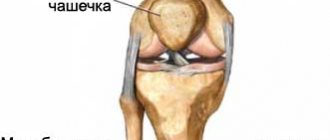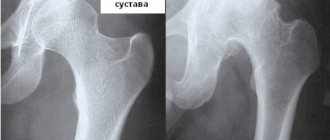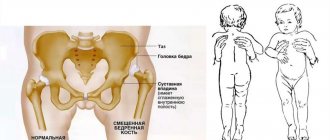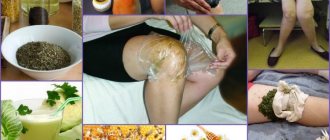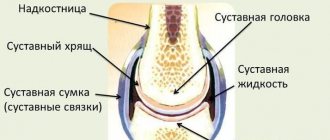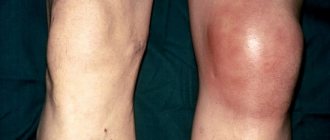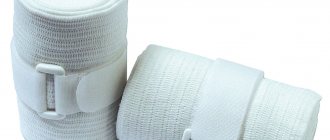Types of bruises
In fact, there are not many of them, here are the main ones:
- Soft tissue bruises are perhaps the most common type. Appear directly from a fall or impact with hard objects. Often observed in children.
- Joint bruises are often confused with joint dislocations. The difference is that when a bruise occurs, the joints continue to move.
- Head contusions are characterized by the formation of a swelling at the site of impact (bump).
- Contusion of the neck or spine. With such bruises, you need to be careful and constantly monitor your condition. If your circulation is poor, you may have difficulty feeling your limbs.
- Thoracic contusion. With a strong blow, breathing problems or even cardiac arrest may occur.
Indications for using a compress for bruises
Compresses are recommended only for minor bruises. If the integrity of the skin is compromised, self-medication is not the best option. Infection can enter the wound and lead to serious complications.
Injuries to the joints, chest and head are dangerous. This can have long-term consequences. That is why it is worth visiting a doctor if you are concerned about your general health and any unpleasant, unusual sensations.
The main indications for compresses against bruises at home are:
- Minor changes with the formation of abrasions.
- Localized bruising.
- Multiple soft tissue hematomas.
To effectively get rid of bruises and contusions, it is necessary to apply a compress immediately after the injury.
Contraindications to their use are local or general increase in body temperature and the presence of wounds on the skin. The presence of severe throbbing pain is also a contraindication.
If the injuries are serious, it is necessary to distinguish them from serious pathology. Internal hemorrhages are possible with abdominal contusions. Their danger is that a person may feel good for several days. Severe chest trauma can lead to rib fractures. If in doubt, consult a specialist to clarify the diagnosis. In case of severe hematomas as a result of severe bruises, a bandage cannot always help. In some cases, treatment with compresses is not enough. For extensive bruises, physiotherapeutic procedures are recommended as additional treatment.
Compresses should not be used for head injuries with bruises around both eyes. This is a possible symptom of a concussion. In this case, an urgent additional examination and consultation with a neurologist is necessary.
What are the degrees of bruises?
They are different and depend on the symptoms:
- 1st degree bruise - the skin is barely noticeably damaged, there is no pain, it goes away in a few days.
- 2nd degree bruise - a blow can damage the tissue, and a bruise will certainly appear.
- A grade 3 bruise is dangerous, accompanied by serious pain from a significant blow, especially to the head, spine or neck. As a rule, it is combined with a dislocation.
- A 4th degree bruise is the most dangerous for the victim’s condition. Accompanied by serious changes in the performance of internal organs and acute pain.
Effective folk recipes for compresses for bruises
Sometimes it happens that it is not possible to go to the pharmacy, and the bruise needs to be treated urgently.
Then you can resort to traditional medicine. Just let's not forget that they can only be used the next day after the injury. There are many such methods, but the most effective are the following:
- Cabbage compress.
Take a leaf of white cabbage. It should be rinsed well under running water. Then mash with a hammer until the juice appears. Apply to the sore spot. Secure with a bandage. This compress is applied for several hours. When the sheet is dry, replace it with a new one. Repeat several times. Sometimes a few days of using such balms is enough. The bruise goes away.
- Onion compress with honey
Take the bow. Grind to pulp in a meat grinder. Add 1 tablespoon of honey. Mix well. Place the mixture on a napkin. Then it is applied to the sore spot. After 1 hour, it should be removed and the bruise should be lubricated with any cream.
Compress for bruises with onions and honey - one of the popular options
- Bandage with sycamore.
Flat leaves are poured with boiling water. Then make a compress out of them. Can be used whole or finely chopped with a knife. Keep for several hours. Then replace it with a new one.
- Salt compresses for bruises.
A strong saline solution is prepared. Take 1 tablespoon of salt for 1/2 tablespoon of warm water and mix. Moisten the bandage with this liquid and apply a compress similar to a warming one. We put cellophane on top, then cotton wool. Bandage for 2-3 hours. Then repeat the procedure. Salt compresses for bruises normalize blood circulation, reduce swelling and pain.
- Rinse with apple cider vinegar, iodine and salt.
For 1/2 tablespoon of apple cider vinegar, take 4-5 drops of iodine and 1 tablespoon of honey. The fleshy mass thus formed is applied to a napkin. It is then attached to the site of injury. This mixture should be stored for no more than one hour.
What is first aid for bruises
If you accidentally hit yourself and feel severe pain, you must immediately provide first aid. Depending on the location, assistance varies:
- Bruised eye. Appears after injury to the eye using any object. If the integrity of the eyeball is not damaged, it is necessary to immediately take the victim to an ophthalmologist. During transportation, apply a bandage and do not make unnecessary head movements.
- Bruised fingers and toes. Absolutely everyone has suffered this injury at least once in their life. Immediate application of cold to the injury site is necessary. This could be ice wrapped in a towel, or some kind of ice object. It is necessary to hold for about half an hour, after which the bruised area should be placed on a hill to normalize blood circulation.
- A joint bruise is characterized by the appearance of slight swelling, which is due to the fact that blood enters the joint cavity. In this case, it is recommended to immediately apply cold to the injury site. Then use medicinal ointments and fix the bruised area. Various procedures are also recommended: physiotherapy, laser therapy and more.
- A facial bruise is characterized by the appearance of severe hematomas, so you must immediately apply cold, and then consult a doctor to prescribe further treatment.
- Bruising parts of the body is a dangerous type of bruise. In this connection, it is initially necessary to apply cold, and then use the services of a radiologist, in order to avoid injuries to internal organs.
- A leg injury is characterized by pain and bruising. If there is a slight bruise, then simply apply cold; if the blow was strong, first apply cold and immediately consult a doctor.
- A head injury is a very serious type of injury, so initially apply cold and be sure to monitor the victim’s condition: if nausea, dizziness and vomiting occur, go to the hospital immediately!
- Injury to internal organs is characterized by dull pain. First aid is to immobilize the person and immediately transport him to the hospital.
Types of compresses
Therapeutic bandages are divided into warming, cold, alcohol and medicinal. They can be dry or wet. Dry heat is used to cover the injured area from contamination. All other lotions are wet.
Warm compress for bruises
They are recommended to be used within two days after the injury. This compress is used as a dissolving agent. It cannot be used for allergic dermatitis, psoriasis and tuberculosis.
Application technique:
- Take a clean napkin, not necessarily sterile. Fold it according to the size of the bruise.
- Moisten generously with warm water and squeeze.
- Apply to skin.
- Place a piece of plastic wrap on top.
- Then cover with a layer of cotton wool. It should completely cover the membrane.
- Secure the wool fabric.
This compress should be kept for 6-8 hours. It is most convenient to wear it at night. It should not be used for concomitant acute respiratory infections and systemic fever. In this case, you should choose other options.
Some tips for dealing with a bruise
How do you know that you have a bruise, or what if you broke something? It’s very simple: if you get a bruise, you will feel a sharp pain, which will later turn into a bruise. Having hit the joint, swelling appears and after some time the joint becomes immobilized. In contrast to a fracture, in which immobilization occurs immediately upon injury.
If in the process of getting a bruise you are scratched or have an abrasion, they must be treated with iodine or hydrogen peroxide.
It is imperative to apply cold to the affected area. This will reduce blood flow, constrict blood vessels and relieve you of bruising. Cold for half an hour will help - after that it is useless. Therefore, if you are injured, hurry to find a cold object, otherwise you will not avoid a bruise. But then you need peace. After a few days, apply heat, it will begin to resolve the hematoma.
When taking painkillers, do not be overzealous; you may not notice a deterioration in your health, as a result of which you will not be able to see a doctor in time.
Important! Do not poke a bruise with a needle - this will cause infection and major complications!
In every case of serious bruises, you must immediately consult a doctor for examination to avoid damage to internal organs, cracks and fractures.
Cold compress for bruises and contusions
This is the best option. Cold causes capillaries to constrict and reduces pain. For minor injuries, one application is sufficient. It is good for bruises in the nose and prevents nosebleeds.
Application technique:
- A piece of bandage soaked in cold water.
- Apply to the bruise area.
- Keep it for half an hour. Replace every 5-10 minutes as it cools. Do not cover the countertop with anything.
Cold compress for bruises
Another alternative to a cold pack is to use ice. In an emergency, you can put a piece of ice from the refrigerator. It is better to put it on a clean napkin or towel. If there is no ice, you can use any frozen food. They also need to be changed every 10 minutes. These dressings should be used within two days after the injury.
Vodka compress for bruises
Refers to warm compresses. It should be used with caution in children and those with cardiovascular diseases.
If you are using 96% rubbing alcohol, you will dilute it with water in a 1:4 ratio. Vodka is usually diluted halfway with water. Pure alcohol may cause skin burns.
How to apply:
- Moisten the gauze with vodka. It should be cut to the size of the injury.
- The skin is pre-lubricated with any oil cream.
- A layer of polyethylene and cotton wool is applied.
- Secure with a bandage.
This compress should not be stored for longer than 30-40 minutes. Vodka compress for bruises reduces signs of inflammation and improves blood circulation.
With medications
There is a wide range of pharmaceuticals available to treat minor injuries.
Dressings with dimethoxide, magnesia or Vishnevsky ointment turned out to be good. Anti-inflammatory gels for compresses (ketonal, dolobene) also bring good results. It is possible to use ointments that restore the permeability of the vascular wall (heparin, lyoton). Such compresses reduce thrombosis and are good for facial bruises. If such a compress is applied in a timely manner, a bruise may not even form.
Compressing a bruise with medications
The method of administration is the same for all drugs except dimethoxide. It consists of the following elements:
- The napkin is moistened with the solution. If gels or ointments are used, they can be applied directly to the skin.
- The next layer will be polyethylene foil or cellophane.
- Then everything is fixed in several layers with a bandage. It can be stored for several hours.
If dimethoxide is used, it is diluted with water in a ratio of 1: 3. Apply for 30 minutes. Failure to comply with this rule may result in skin burns. These compresses are especially good for bruised joints. They have an anti-inflammatory effect and reduce swelling.
The consequences of such injuries
In the most common scenario, there are no consequences of injury. Your bruise will only hurt for a short time, maybe it will swell a little, and the hematoma will go away in just a week.
But, there are situations when the blow was very strong, or the fall was too unsuccessful and the consequences will be serious. In such cases, you can’t let everything take its course.
- Firstly, if you have a brain injury, you need to monitor your condition: nausea, dizziness, vomiting - this can lead to death if treatment is not at the proper level.
- Secondly, if huge bruises are treated incorrectly, the hematoma may remain inside, and the clot will be acutely painful. Use ointments.
- Thirdly, bruises of internal organs that you left without examination will cause serious deviations. The heart, kidneys, and liver may not function properly, leading to serious illness.
- Fourthly, if a very large vessel is bruised, vascular disease can develop, which ultimately leads to a stroke or even death. Therefore, be sure to consult a doctor. Don’t let the state of your health take its course, don’t listen to grandmothers and don’t self-medicate. You can’t buy health or life later, no matter what!
Treatment with medications
The doctor will recommend medicine or ointment for the bruise, these are the most common of them:
- Ketanov, analgin - used to remove painful sensations;
- Aspirin is taken to avoid inflammatory processes;
- Ibuprofen ointments, bystrum gel, diclofenac also have an anti-inflammatory effect;
- Finalgon, fastum gel, capsicam - have a warming effect, they can be combined with physical procedures.
- If after using medications the swelling does not go away, you must consult a doctor to undergo physical therapy combined with the use of UHF, electrophoresis, and laser devices. This is called restorative therapy.
Never heat the bruised area and completely avoid using a hot bath or sauna - this will provoke tumor growth and hemorrhage.
Treatment for a bruised nail
A nail bruise is one of the most common and painful injuries, which is also easily eliminated with traditional remedies.
Recipes for these folk methods have been known for a long time. To remove swelling and pain from the nail after a bruise, you need to put a piece of gauze on it.
After this is done, the affected finger is dipped in water in which ice was previously placed. The procedure time is 5 minutes. To ensure that the result is noticeable as quickly as possible, the procedure is repeated for an hour every 15 minutes.
If a nail has been bruised, it is recommended to treat it with iodine. This way you can stop the inflammatory process and prevent infection from getting into the wound.
In this case, not only the affected area is treated, but the entire finger. If nothing is done in time, the finger will turn black. To prevent this from happening, a mesh of iodine is applied.
To protect against wiping off the iodine, and also to eliminate the possibility of losing the nail, a pressure bandage is applied on top. During the recovery period, you need to wear shoes that do not restrict your feet.
Share link:
ethnoscience
There are many recipes for bruises, here are just a few of them:
- To make an ointment for bruises, take dried burdock leaves and add sunflower oil. Let it brew for a day. Then simmer over low heat for up to 15 minutes. Then pour the strained mixture into a jar and put it in the refrigerator. Use the cooled ointment against bruises.
- One of the old recipes for getting rid of bruises is herbs. Take wormwood, wash it, dry it, then squeeze out the juice. It is this that is applied to the place of pain. You can also take oak bark and daisy – chop, mix, pour boiling water and leave for half an hour. It is with this infusion that the bruised area is treated.
- For a bruise, you can prepare an infusion of arnica: 1 tbsp. A spoonful of the flowers of this plant is poured into a glass of boiling water and infused in a thermos. Then strain and drink before meals three times a day.
- Bodyaga is one of the proven remedies for getting rid of bruises. The recipe is simple: 2 tbsp. spoons of bodyagu pour 250 ml. boiling water to make porridge. It must be applied to the sore spot.
- Honey is the cure for all diseases. Mix 1 tbsp. spoon of honey 50 ml. aloe juice and apply to the bruise.
- A cabbage leaf helps with bruises. Pierce it, but not all the way through, and apply it to the sore spot.
Note! Do not overuse ointments, creams and infusions. Traditional medicine is quite dangerous when you don’t understand it. It is also contraindicated for pregnant and breastfeeding women and children under 3 years of age. Do not risk the health of your loved ones if you are not sure of the result. Because self-medication can lead to serious complications. Be careful!
Follow this link and view more traditional recipes for treating bruises.
Any injury, especially at a young age, can lead to complications. Therefore, pay attention to every bruise or contusion on the body and immediately begin to treat it. If you have received a serious injury, immediately consult a doctor, undergo a full examination and take only those medications that the doctor has prescribed for you. Do not try to determine your diagnosis by eye. This will cause even bigger problems. Take care of your health and live a long and happy life!
Effective ointments for bruises
For bruises, a folk remedy such as ointment is excellent.
In order to prepare it, you need to take fresh burdock roots. The root crop needs to be washed and dried. You will need only 75 g. The root is infused in 200 ml of water for 24 hours, after which it must be heated over low heat for 15 minutes. It is necessary to ensure that the medicine does not boil. After this, the broth is filtered, poured into a dark glass jar and stored in the refrigerator. The product is applied to the affected area as needed.
An equally effective remedy is an ointment made from black crushed laundry soap, camphor powder and ammonia. You need to take 30 g of each ingredient. The mixture is filled with 250 ml of lamp oil. It can be bought at any temple. You also need to take 250 ml of white turpentine. All ingredients are thoroughly mixed. After the ointment is ready, it is applied to the affected areas.
Providing first aid for bruises at home
Bruises are closed injuries, in which the tissues located on the surface are most affected - skin, subcutaneous fat, muscles, periosteum. They usually occur as a result of a fall or blow. Typical symptoms of bruises are: pain in the affected area, swelling, hematoma. Let's look at how to properly treat soft tissue bruises accompanied by hematomas (bruises) and sprains at home.
How quickly recovery occurs after a bruise, and whether complications develop, is largely determined by the correctness and timeliness of first aid. Let us describe the main stages of emergency care after a bruise:
- First of all, you should ensure rest, especially to the area of the body that was injured. The victim must give the body a comfortable position depending on the location of the injury. For example, if you bruise your abdomen, you should lie on your back, if you bruise your tailbone, you should lie on your stomach or side, and if you bruise your head, it is recommended to lie on your back or side and give it a slightly elevated position. Bruised limbs also need to be elevated.
- The next important step is the application of a cold compress, which will help reduce pain and prevent the formation of severe swelling and hematoma. It is best to use an ice pack wrapped in cotton cloth for this purpose. You can also use any frozen food from the freezer and a cloth soaked in cold water. The cold should be kept for 15 - 20 minutes, after which take a five-minute break and repeat the procedure.
- If you experience severe pain, you can take a pain reliever (Ibuprofen, Analgin, Naproxen, etc.). However, it is not advisable to use analgesics in case of a severe injury to the head or abdomen before a medical examination.
Treating bruises at home
Treatment of bruises, especially severe ones, at home is recommended only after consulting a doctor who can assess the extent of the damage and exclude concomitant, more dangerous lesions. The main medications that are used in case of bruises and sprains are non-steroidal anti-inflammatory drugs of systemic and local action. These are medications based on:
- diclofenac;
- indomethacin;
- ibuprofen;
- piroxicam;
- nimesulide;
- naproxen, etc.
The course of treatment with such drugs for internal use should not exceed 5-7 days, and for external use - 10-12 days.
Local products can also be used in the form of ointments, creams and gels based on various plant components (calendula, cinquefoil, comfrey, etc.), heparin, which have a warming-irritating effect (Apisatron, Viprosal, Espol, etc.), a regenerating effect (dexpanthenol). It is worth noting that products with a warming effect should begin to be used no earlier than 2-3 days after receiving a bruise. All external agents must be applied within the boundaries of the painful area.
Folk remedies for treating bruises
Here are several ways to treat bruises from traditional healers:
- Apply a cake obtained by mixing crushed dried wormwood herb with kefir to the bruised area.
- Make lotions from gauze soaked in alcohol tincture of arnica.
- Apply a slightly mashed cabbage leaf (to release the juice) to the affected area.
- Apply raw potatoes grated and placed in gauze to the bruised area.
- Apply iodine mesh to the hematoma.
https://womanadvice.ru/ushiby-lechenie-v-domashnih-usloviyah
How to cure a bruise with water, vinegar and oil?
Today there are many proven folk methods for treating bruises. There is a fairly simple way that will prevent fluid accumulation and relieve swelling.
To prepare this medicine, you need to take boiled water, any vinegar and a little vegetable oil (15 g each).
This is all mixed thoroughly. Upon completion of preparation, it is necessary to moisten a cotton swab or natural cloth and place it on the affected area. It is recommended to cover the surface with cellophane and tie it with a scarf to keep warm. To ensure that no trace of damage remains, it is enough to carry out several procedures. Treatment of bruises with folk remedies also involves heating. This recipe has survived to this day since the times of Kievan Rus.
To do this, you need to light the stove with birch wood. When the tree burns, the heat remains. Afterwards it was raked onto the beds, and for the remedy to begin to work, the person was laid next to him on a trestle bed. Thus, warming up occurred within an hour. The only disadvantage of this method is the need for attentiveness. You need to make sure that there is no burn on the skin. Ointments are no less effective folk remedies. Since ancient times, ointments have been applied to the affected areas. Accordingly, you need to prepare this product yourself. So, to get the drug, you need to have birch tar, spruce resin, lard. The proportions of all ingredients are the same.
All the necessary ingredients are placed in a clay pot, which is tightly closed with a lid. After this, the pot is coated with dough. It is advisable to take a thick layer. The pot is placed in the oven in which the bread was previously baked. The pot sits all day. After 24 hours, the ointment wrapped in cloth is applied to the affected area.
Before applying the bandage to the bruise, it is necessary to warm it up in an oven with dry heat. This is the best remedy that is recommended for use in case of severe bruise, when the bone is also injured.
Hand bruise - characteristics and treatment methods
Hands in general most often suffer from bruises - this part of the body is constantly used in humans. A hand injury can be accompanied not only by the formation of a bruise, but also by swelling of the damaged area - at best, this will lead to temporary disability, and at worst, to disability.
First aid for a bruised hand
As soon as a bruise occurs, you need to apply a cold compress to the injury site, or use ice from the refrigerator. Remember that ice should not be applied directly to the skin at the site of the bruise - this can cause frostbite; you need to wrap it in a cloth and then apply a cold compress.
The second step in providing first aid for a bruised hand is to apply a tight, fixing bandage. To do this, you can use a regular elastic bandage, or a special fixing bandage, which is sold in pharmacies. It is important to ensure maximum immobility of the injured hand; you can hang it on a scarf or headscarf.
All described measures from the “first aid” category will help reduce the intensity of pain and speed up the process of swelling disappearance.
Please note: if you feel intense pain when you bruise your arm, and you cannot move your fingers or wrist, you should immediately seek medical help - an X-ray examination will help identify (or rule out) a fracture or crack of the bone.
Treatment of a hand bruise
Only 1-2 days after providing first aid can you begin to directly treat a hand bruise. For this, the use of folk remedies will be effective - here are a few recipes:
- mix horseradish juice and vodka in equal proportions, moisten a gauze cloth with the resulting mixture and apply to the injured area for 10 minutes every 2-3 hours;
- pour 500 ml of boiling water over 30 grams of dry horsetail herb and leave for half an hour, then a gauze cloth is moistened in the broth and applied to the bruise for 20-30 minutes;
- cut raw potatoes into slices (no more than 5 mm thick) and apply them to the bruise, securing them with a bandage.
If the hand bruise is severe, the doctor will prescribe non-steroidal anti-inflammatory ointments as part of the treatment, which will need to be used to treat the injured area 3-4 times a day. Such ointments include Ketoprofen, Ibuprofen, Diclofenac, which have analgesic, anti-inflammatory and decongestant properties.
Knee contusion
Most often, this type of injury occurs in athletes and children. After receiving an injury, within a few hours the knee swells, becomes hyperemic, and feels hot to the touch. Literally the next day, the victim is unable to walk; he has difficulty sitting down and getting up from a chair/bed.
First aid for a bruised knee joint
Immediately after the injury, it is necessary to put the patient to bed and place the injured lower limb on some elevation - for example, place a pillow or cushion under the shin. A tight bandage is applied to the damaged knee joint and ice is periodically applied.
The main treatment of the injury in question should be carried out on the second day after the injury.
Treatment of a bruised knee joint
Among the folk remedies, the herb wild rosemary will help quickly restore the functioning of a damaged knee joint - its flowers are used to make a tincture (sold in pharmacies), which should be applied with soft circular movements to the skin at the site of the bruise. It is recommended to do this procedure 3-4 times a day.
Another excellent treatment option for a knee bruise is the use of wormwood. This herb grows everywhere, you just need to pick a few leaves with a trunk, twist it in a meat grinder (grind in a blender) and apply directly to the skin at the site of injury under a tight bandage. You need to change the wormwood pulp 2-3 times a day.
If the bruise of the knee joint is pronounced, complete immobilization of the affected lower limb is noted, then it is necessary to seek medical help. The doctor, of course, will conduct an X-ray examination of the patient to make sure that there is no fracture or crack in the bone. Then the patient will be prescribed Indomethacin, Voltaren, Diclofenac, Ibuprofen - anti-inflammatory, warming, decongestant and analgesic medications, which are selected individually in each case.
Bruised toe
This is one of the most common types of bruises, which most often occurs in the summer - people walk in open shoes or barefoot, clinging to hard objects with their toes. At first glance, such a bruise does not pose any danger to human health, but the fact is that when injured, tendons, joints and even nerve endings on the toe are damaged. The result of improper treatment may be progressive arthritis in the near future.
First aid for a bruised toe
You need to take an ice cube and massage the bruise every hour for 15 minutes. In this mode, assistance is provided for 3-4 hours until the pain subsides, and then you can continue the procedure in a mode of 15 minutes every 2 hours.
Please note: in the first day after a bruise, you should never apply warming compresses to the damaged area - they can provoke the development of severe swelling.
Treatment for a bruised toe
There is no need to bandage a bruised finger, but if there is noticeable severe damage to the nail with partial detachment from the soft tissue, then a fixing plaster can be applied to this area. Until the end of treatment for a bruised toe, you need to spare the damaged area and wear only comfortable shoes without heels.
The simplest, but no less effective method of treating the injury in question is to use grated horseradish with the juice released - the pulp is applied to the site of the injury in the form of a compress for 15 minutes. The procedure must be carried out at least 3 times a day, but such a compress cannot be applied at night.
Another effective method of treating a bruised toe from the category of “traditional medicine” is to apply a mixture of chopped onions and sugar in arbitrary proportions to the bruise.
If the patient consults a doctor, an X-ray examination of the injury will be carried out; the specialist may prescribe the use of Lyoton, Traumeel ointments, and compresses with Dimexide.
Head contusion
After a blow, a clearly localized swelling may appear on the head - a bump that should not be ignored. It is necessary not only to pay attention to the condition of the lump, but also to the presence/absence of nausea and vomiting, loss of consciousness. Such symptoms will indicate a concussion, which, if left untreated, can result in serious consequences.
First aid for head injury
If the victim briefly loses consciousness or experiences dizziness, then it is necessary to urgently consult a doctor. In all other cases, first aid for the injury in question comes down to the following measures:
- put the patient to bed;
- provide him with absolute peace, shade the windows;
- Ice should be applied to the bruise site, but for no more than 15 minutes within an hour;
- Closely monitor the victim’s condition and, if it worsens, call an ambulance.
Treatment of head contusion
If the type of injury in question is not accompanied by a concussion (and this will be clear literally in the first hours), then on the second day after the injury you can use an ointment based on the herb comfrey (it is sold in pharmacies), as well as heparin ointment, Troxevasin - they treat the bump .
If, after a head injury, the victim is diagnosed with a concussion, then only the mildest degree of the disease can be treated on an outpatient basis. In all other cases, the victim is placed in a medical facility and undergoes full-fledged therapy, which is selected on an individual basis.
Neck bruise
A neck bruise is dangerous because the injury damages not only soft tissues, but also the vertebrae - they can become displaced, which will lead to impaired blood circulation in the brain and pinched nerves.
First aid for a neck injury
First of all, you need to put the victim to bed and provide him with peace. Be sure to apply cold compresses or ice to the injury site - do not forget to take breaks in this procedure; you cannot keep ice and a cold compress on the injury site for more than 15 minutes.
As soon as the pain subsides, you can apply crushed plantain leaves to the site of the bruise and make a retaining bandage - this method is especially convenient to use in summer cottages.
Please note: the victim should be closely monitored and if his health condition worsens, immediately seek medical help.
Treatment of a neck bruise
If the type of injury in question is weakly expressed, then no treatment is provided as such. But if the victim develops headaches, dizziness and other pathological conditions, doctors will conduct a full examination of the cerebral vessels. Only after such an examination will treatment be prescribed - wearing a support bandage around the neck, acupuncture and reflexology procedures.
Back bruise
With back bruises, there is a high risk of spinal fracture, so the victim should be carefully examined immediately after the injury. First of all, the patient is provided with complete rest; if the victim lies face down after a fall and complains of severe back pain, then he should not be turned over under any circumstances - if the spine is fractured, this can lead to complete disability. You just need to call an ambulance.
First aid for back bruises
If the bruise is minor, then you can quickly relieve pain and discomfort at the site of injury by taking a bath with a decoction of peppermint - you only need to take 100 grams of mint per bucket of hot water. A compress of white beans also helps a lot - you need to boil them, knead them and apply them to the sore spot.
For medications for minor back bruises, doctors recommend using Voltaren and/or Emulgel - they have an analgesic, anti-inflammatory, mild warming and decongestant effect.
Chest contusion
Such an injury may be accompanied by breathing problems, the development of arrhythmia and problems in the functioning of the heart. The consequences of such an injury are unpredictable - serious pathologies of the heart and diseases of the respiratory system can develop.
As a rule, with severe bruises of the chest, the patient complains of chest pain, which intensifies with inspiration, and a short-term loss of consciousness is possible. In this case, you must urgently seek professional medical help.
First aid for chest contusion
It is highly advisable to limit the victim’s mobility - at least the first day after the injury must be spent in complete rest. The following folk remedies can be used:
- mix the green part of parsley and vinegar in equal proportions, apply the paste to the bruise 2-3 times a day, you can cover with a loose bandage;
- mix honey and vinegar in equal proportions, moisten gauze pads in the resulting solution and apply to the site of the bruise. The dressings should always be damp, so they will need to be changed frequently;
- Apply gauze pads soaked in arnica tincture (sold in pharmacies) to the damaged area.
Bruised eye
The first signs of an eye injury will be pain, swelling, and redness of the eyeball. If the injury was blunt, or there was a penetrating wound to the eye, you should immediately seek medical help.
In all other cases, help can be provided at home, but remember that an eye injury requires wearing a sterile bandage for 3-5 days.
First aid for eye injury
Sulfacyl sodium should be dripped into the damaged eye - these drops will help quickly get rid of swelling and redness of the eyeball and relieve pain.
To speed up treatment, you can use Thiamine ointment and/or Levomecitin. And among folk remedies, we can recommend lotions for the damaged eye using a decoction of bird cherry flowers.
Bruises are not simple injuries; they can result in serious consequences, which in some cases lead to disability of the victim. In order not to be mistaken in assessing the severity of a particular bruise, it is advisable to seek professional medical help.
https://okeydoc.ru/kak-lechit-ushiby-v-domashnix-usloviyax/
Folk remedies (recipes) for the treatment of bruises
1) Cabbage leaves have long been used to treat injuries. A fresh and washed sheet should be applied to the site of the bruise, then the whole thing is tightly bandaged with a bandage or any other bandage. Compresses need to be changed every three hours.
2) Baths with salt are excellent in treating not only bruises, but also any skin diseases. To do this, take a bath of hot water and dilute a glass of salt in it. You should not stay in the salt solution for more than half an hour.
Also, daily use of such baths is highly undesirable. Twice in 7 days is enough to normalize the condition of the skin and cure the bruise.
3) Perhaps not everyone knows about such an excellent natural remedy as badyaga . The powder with an unpleasant odor has miraculous properties.
It is made by grinding the skeleton of algae from river sponges, thanks to which a crumbly substance is obtained from small needles. Badyaga is diluted with water and applied to the affected area of the skin, gently massaging.
The needles damage the upper layer of the epidermis, thereby helping to resolve bruises and bruises. This remedy is one of the most effective, and its price at the pharmacy is incredibly cheap.
4) There is probably a homemade aloe plant in every home. Its leaves are thoroughly washed and cut in half, after which the inside is smeared with honey and applied to the wounds.
Aloe leaf juice disinfects well and promotes the regeneration of soft tissues, as well as their speedy healing.
Compresses for bruises
There are many types of effective compresses that can treat bruises. They can be easily prepared at home.
1. Onions and sugar should be present in your kitchen. To make a compress, you need to chop a couple of onions and mix the resulting pulp thoroughly with sugar in the amount of a tablespoon.
You need to apply the resulting mousse to the affected part and secure it well with a bandage.
2. The next compress is made from vegetable oil, propolis and red pepper . Half a liter of oil is mixed with ten grams of fresh propolis and a tablespoon of red pepper is added.
After mixing thoroughly, it should be applied to a linen cloth, which is placed on the affected area of the skin for half a day, after which it is replaced with a fresh one. This procedure must be completed within a week.
3. Homemade milk with apples is also a good and proven remedy for eliminating bruises and bruises. To do this, you should boil two apples, peel them, remove the seeds and leave only the crumb, which then must be thoroughly crushed in half a liter of warm milk.
The mixture should be applied to a bandage, and dressings should be done every two hours.
4. Vinegar is good at relieving heat. It’s not for nothing that when we were children, our parents often applied compresses to our foreheads when they couldn’t bring down the temperature.
To treat bruises, vinegar is diluted with water, and a handkerchief should be thoroughly soaked in the solution and applied to the damaged area. The disadvantage of this procedure is that the bandage should be changed every ten to fifteen minutes.
Ointments for treating bruises
In addition to compresses, you can prepare your own ointment from natural ingredients.
Burdock root ointment . To prepare it, you need one hundred grams of fresh plant and 200 ml of olive oil. The root is crushed and filled with oil and left for a day in a dark place.
After 24 hours, the tincture is poured into a saucepan and boiled for twenty minutes without bringing to a boil. Then it is removed from the stove, cooled and filtered through a strainer or cheesecloth. The resulting ointment should be used to lubricate bruises, sprains and hematomas.
There is another mastic based on laundry soap, camphor and ammonia . Thirty grams of each component are mixed thoroughly and a glass of church oil is added.
After thoroughly mixing the mixture, it can be applied to bruises, as well as in the case of ulcers, cuts and other skin diseases.
Decoctions and infusions for bruises
To eliminate the problem from the inside, many fans of traditional medicine advise drinking grapevine decoction .
Several branches are boiled for twenty minutes, after which the resulting decoction is taken 0.5 cups 3 times a day. This method leads to rapid healing of the wound and relieves pain.
Also, good tissue healing is promoted by a tincture of St. John's wort , which is taken orally.
Thirty grams of dried St. John's wort is poured with water and should be simmered over low heat for half an hour.
When the infusion takes on a dark brownish tint, the resulting herbalist is removed from the heat and filtered. You need to drink three tablespoons of it every day. Do this before you start eating.
Bruised nail
Very often people experience a bruised nail. To prevent the nail plate from turning black and peeling off, you need to react immediately and provide first aid.
First you need to bandage your finger and dip it in ice water every couple of minutes. To prevent the plate from turning black, it can be smeared with iodine, drawing a kind of grid.
After this procedure, the finger must be treated with peroxide and, if desired, an iodine solution to prevent infection. After completing the above procedures, the finger and nail are fixed with a bandage.
Before you start treating a bruise with folk remedies, you should make sure that it is definitely not a fracture . After all, the symptoms of a bruise and a fracture are very often similar to each other.
Therefore, go to the hospital and take a picture, only after that start treatment at home.
https://dobro.pw/ushiby-lechenie-v-domashnix-usloviyax/
Introduction
Damage to soft tissues accompanies human life.
A bruise is a closed mechanical damage to soft tissues caused by short-term exposure to a damaging factor, which is not accompanied by the formation of wounds. When a bruise occurs, small vessels always rupture, followed by hemorrhage, the severity of which can vary. Damage to soft tissues, regardless of the cause that caused them, constitutes the majority of visits to primary health care institutions. Bruises usually occur when falling or hitting hard objects. In children of the first years of life, household and play injuries, bruises of the soft tissues of the face and neck predominate. At older ages, the main types of injuries are transport, sports, and street injuries [1]. Damage to superficial soft tissues is always accompanied by swelling of the injury site as a result of the skin being soaked in lymph, blood and local aseptic inflammation. The amount of swelling depends on the area of damage to the subcutaneous tissue at the site of the injury. For example, in the area of the cranial vault, due to the thin layer of subcutaneous fat, edema is insignificant, while even mild bruises of the face are accompanied by the development of pronounced edema [2]. Bleeding that continues deep into the tissue often leads to additional trauma to adjacent tissues as a result of their compression, which is accompanied by a gradual increase in pain and dysfunction. A bruise sometimes accompanies other injuries (fracture, etc.), so you should always exclude more complex injuries and evaluate the consequences of injuries [2, 3]. Soft tissue injuries are accompanied by pain of varying intensity. Thus, with bruises of large nerves and their endings, the pain is always sharp, shooting. With bruises of the torso and limbs (shoulder, thigh), tense hematomas can form, with bursting pain, sometimes with superficial numbness.
Treatment of soft tissue bruises is traditionally aimed at eliminating the above symptoms and excluding more severe pathology [4]. Currently, there are treatment standards - clinical guidelines for the provision of emergency medical care for soft tissue injuries, where a special place is given to the issues of immobilization, wound care and pain relief [5]. The administration of opioid and non-opioid analgesics is recommended in combination with antihistamines (metamizole sodium, trimeperidine, diphenhydramine). It is necessary to perform immobilization as soon as possible. Even with minor injuries, it is better to apply a tight bandage to the bruised area or immobilize with an orthosis. This will ensure peace of the bruised segment, normalize microcirculation, and reduce motor activity. Some orthotic products have a micromassage effect, which also has a beneficial effect on reparative processes. Along with this, analgesic therapy is carried out. These activities must be performed within the first 3 days. Then it is possible to use warming procedures and physiotherapeutic measures. Local therapy with ointments and gels can be used from the 1st day if they do not have a warming effect and do not increase vascular permeability.
Soft tissue bruises, and therefore pain, are inherently interconnected. Pain is a unique psychophysiological state of a person that occurs as a result of exposure to super-strong or destructive stimuli and causes functional or organic disorders in the body. Moreover, pain is subjective in nature, its perception is based on personal experience associated with damage in the early period of life. Its perception is determined not only by the source of pain, but also by such, at first glance, non-obvious factors as the psychophysical and emotional characteristics of the individual, his cultural level, family training and many others. Most often it is characterized as a psychophysical state of a person, which is a characteristic reaction to various organic and functional disorders caused by the action of various stimuli. Pain is both a physical sensation and an emotional reaction to it. Pain expert Margot McCaffrey's pithy definition is "anything that a patient says hurts them."
The functioning of the nociceptive system is mediated by neurochemical mechanisms realized by endogenous peptides and mediators, including histamine, substance P, kinins, prostaglandins, leukotrienes, potassium and hydrogen ions [4–6]. When pain occurs, the processes of hypercoagulation and lipid peroxidation are activated, the content of proteolytic enzymes increases, which causes tissue destruction. Pain contributes to the development of tissue hypoxia, degenerative processes and disruption of microcirculation in tissues. This, in turn, increases the alteration of injured tissues [7].
Thus, pain is a complex psychophysiological phenomenon, which, both from an ethical and legal standpoint, requires treatment aimed at relieving pain [8]. Understanding the complexity of its nature, mechanisms of development and regulation allows us to take a differentiated approach to the issue of choosing analgesic therapy.
One of the most effective means of protecting peripheral nociceptors that does not cause depression of vital functions are non-steroidal anti-inflammatory drugs (NSAIDs). The modern concept of effective pain relief for bruises and other types of injuries involves a multimodal approach - influencing various parts of the pain impulse. In this regard, it is advisable to combine the administration of NSAIDs with opiates or opioids for severe pain syndrome, for example, in case of shockogenic traumatic injuries.
Nonsteroidal anti-inflammatory drugs are the drugs of choice for the treatment of mild to moderate pain. Their anti-inflammatory effect is based on inhibition of cyclooxygenase (COX). One of the representatives of NSAIDs is ketoprofen, produced in various forms (tablets, injections, external ones). The triple effect - anti-inflammatory, analgesic and antipyretic - is due to blocking the enzymes COX-1 and COX-2 and, partially, lipoxygenase, which leads to suppression of the synthesis of prostaglandins (including in the central nervous system, most likely in the hypothalamus) and thromboxanes. Ketoprofen stabilizes in vitro
and
in vivo
liposomal membranes, at high concentrations
in vitro
suppresses the synthesis of bradykinin and leukotrienes. It does not have a negative effect on the condition of articular cartilage [9].
From the point of view of the ratio of anti-inflammatory and analgesic activity, ketoprofen seems to be the optimal molecule. Thus, according to an experimental study using a model of toothache, ketoprofen has the most pronounced anti-inflammatory effect compared to many NSAIDs, while the clinical effectiveness indicator (total reduction in pain after 4 hours) is the greatest for ketoprofen [10]. It is important to note that these experimental data were confirmed by data from a meta-analysis of 13 RCTs: with regard to the relief of moderate and severe pain, ketoprofen is significantly superior to diclofenac and ibuprofen [11].
Despite the fact that ketoprofen is a “traditional” non-selective NSAID, it is less capable of causing NSAID-associated gastrointestinal and cardiovascular complications - data from a Finnish population-based study assessing the causes of 9191 events in the upper gastrointestinal tract ( including cases of bleeding, ulcers and perforation). According to the results obtained, the likelihood of developing serious gastrointestinal complications when using ketoprofen was lower compared to other NSAIDs, such as diclofenac. Ketoprofen demonstrated a similar or even lower risk of developing gastrointestinal pathology than a number of selective NSAIDs [9–11]. The minimal negative effect of ketoprofen on the cardiovascular system has been demonstrated in a number of large-scale epidemiological studies.
In a study of the analgesic effect of ketoprofen in the acute period of injury in victims with various skeletal injuries, the onset of analgesic effect was noted within 12.2 ± 2.6 minutes after intramuscular application of 100 mg of ketoprofen. The use of 200 mg reduced the wait for the development of analgesia to 8.2±2.2 minutes. At the same time, in patients with severe musculoskeletal injury, ketonal was used at a dose of 200 mg in combination with intravenous tramadol (100 mg), and the analgesic effect was realized in 5.8 ± 0.9 minutes, which was faster compared to tramadol monotherapy at the same dosage (6.0±1.2 min) [12].
Purpose of the study:
determine the effectiveness of analgesic therapy for bruises of the upper and lower extremities.
Symptoms of bruises
So, how can you determine that an injured person has not a fracture or a wound, but an ordinary bruise?
? When a person is bruised, a person feels pain, swelling appears, and after a while (depending on the force of the blow), a bruise occurs. In children and young and middle-aged people, the strength and size of the bruise can be judged by the bruise, but in an elderly person this is more difficult to determine, since the processes in the subcutaneous layer occur a little differently. The method of treatment depends on how long the bruise is.
As soon as the unexpected happens and a person is injured, you must immediately apply something cold to the injured area: ice, a heating pad with cold water, or at least a cold compress. If your arm or leg is bruised, it would be good to apply a tight bandage. The cold compress is changed as it warms up by again soaking the cloth in cold water. This technique slightly anesthetizes, relieves swelling and localizes the bruise, preventing it from spreading wider.
After 2-3 days, treatment proceeds as follows: a warm compress or a warm heating pad is applied to the injured area. You can also take a warm bath or go to UHF therapy. This will help to quickly reduce the area of hemorrhage, and then it will completely resolve.
After the pain has completely passed, you can do a massage or self-massage on the bruised area, especially if it was a bruised limb and the mobility of the joints is somewhat limited. Massage will help to avoid the negative consequences of a bruise and completely restore the motor function of the limbs.
Pharmacy medications for bruises
In addition, you can use ointments and gels with non-steroidal anti-inflammatory drugs
(NSAIDs), applying them to the site of injury according to the instructions. The ointment should contain substances such as diclofenac sodium, ibuprofen and ketoprofen. These ointments should be applied to the site of injury at least 4 times a day, over the entire area of the affected skin. If a bruise causes wounds or large abrasions, there is no need to apply NSAID ointment to these areas. For minor bruises, the amount of product may be small, but for serious bruises, with large swelling, more will be needed, because swelling makes it difficult for the product to penetrate the skin. In this case, the ointment or gel can be applied more often than 4 times a day - at the patient’s discretion.
For severe pain, analgesics or NSAIDs are prescribed orally, in 2-3 doses
: diclofenac potassium, ibuprofen, ketoprofen, naproxen. However, in case of persistent severe pain, the intervention of a specialist is necessary, and self-medication is inappropriate here. After all, any simple bruise can lead to serious consequences if it is not treated or treated incorrectly.
Our ancestors - warriors and hard workers, knew how to treat themselves and loved ones with their folk remedies. Let’s try to turn to their wisdom and help ourselves with trauma. Man is connected with nature by invisible threads, and it is natural remedies that sometimes turn out to be very effective. So, let's list the methods of treating a bruise in order.
:
- Linen plaster for bruises
. We will need a clean cloth made of natural linen. It needs to be crushed into a very fine powder. Then mix this powder with vegetable oil (1 part powder and 4 parts oil). Apply the mixture to the bruise and cover it with cling film or cellophane film. After an hour, wash off the product and carefully wipe dry. If you experience discomfort, you can remove it earlier. - If you have viper fat in your house, know that it is an excellent remedy for bruises. It just needs to be rubbed into the injury site with gentle movements. This remedy contains both pain relief and treatment.
https://www.inmoment.ru/beauty/health/injuries.html
Treatment of bruises with compresses and tinctures
After a wound or bruise has been received, swelling and pain may form in the affected area.
To avoid such symptoms, you can use proven folk remedies. The most commonly used are tinctures. To prepare one of these tinctures, you need to take 2 grated heads of garlic and mix them with 6% apple cider vinegar. Be sure to do this in a deep plate made of dark glass.
The volume of such dishes should be 0.5 liters. The tincture in a dark plate is tightly closed and placed for a week in a cool place where there is no light. After this time, the tincture is rubbed into the affected area for 10 minutes. Wiping is performed several times a day. The shelf life of the tincture reaches 8 months.
If there is a bruise on the affected area, use this tincture in a heated state. The procedure time is half an hour. The course of treatment lasts approximately 8 days. In this case, only natural fabric should be dipped in the solution.

